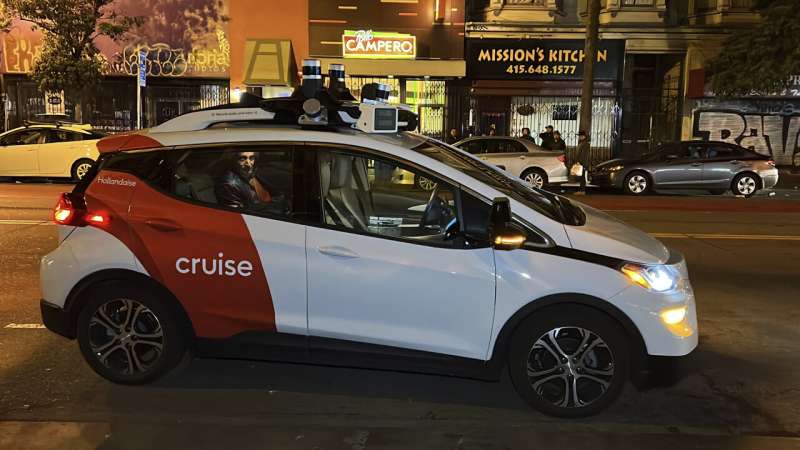This article has been reviewed according to Science X's editorial process and policies. Editors have highlighted the following attributes while ensuring the content's credibility:
fact-checked
reputable news agency
proofread
GM's Cruise robotaxi service faces fine in alleged cover-up of San Francisco accident's severity

California regulators are alleging a San Francisco robotaxi service owned by General Motors covered up the severity of an accident involving one of its driverless cars, raising the specter they may add a fine to the recent suspension of its California license.
The potential penalty facing GM's Cruise service could be around $1.5 million, based on documents filed late last week by the California Public Utilities Commission.
The notice orders Cruise to appear at a Feb. 6 evidentiary hearing to determine whether the robotaxi service misled regulators about what happened after one of its driverless cars ran into a pedestrian who had already been struck by another vehicle driven by a human on the evening of Oct. 2 in San Francisco.
The February hearing comes just six months after the commission authorized Cruise's robotaxi service to begin charging passengers for around-the-clock rides throughout San Francisco despite strident objections from city officials who warned the driverless cars malfunctioned.
Three weeks after Cruise's Oct. 2 accident, the California Department of Motor Vehicles effectively shut down the robotaxi service by suspending its license to operate in the state.
The suspension was a major blow for Cruise and its corporate parent GM, which absorbed huge losses during the development of the driverless service that was supposed to generate $1 billion in revenue by 2025 as it expanded beyond San Francisco.
After losing nearly $6 billion since the end of 2019, Cruise has shifted into reverse as it scrambles to control the fallout from the Oct. 2 accident that critically injured the run-over pedestrian and led to the recent resignation of CEO and co-founder Kyle Vogt.
Without directly addressing the potential fine, GM CEO Mary Barra said Monday that the October crash has helped the automaker learn more about the need for transparency and a better relationship with regulators.
"We're very focused on righting the ship here because this is technology that can make the way we move from point A to point B safer," Barra told a gathering of automotive media.
Barra also pointed to the overhaul of Cruise's management that included a reorganization of its government-relations and legal teams as signs of progress. "We think we can do things more effectively," she said.
Cruise issued its own statement pledging to respond "in a timely manner" to the Public Utilities Commission's concerns. The company has already hired an outside law firm to scrutinize its response to the Oct. 2 accident.
The most serious questions about the incident concern Cruise's handling of a video showing a robotaxi named "Panini" dragging the pedestrian 20 feet (6 meters) at a speed of seven miles per hour before coming to the stop.
In a Dec. 1 filing recounting how Cruise handled disclosures about the accident, the Public Utilities Commission asserted the company tried to conceal how its robotaxi reacted to the accident for more than two weeks.
The documents allege Cruise's concealment started with an Oct. 3 phone call to a regulatory analyst who was told the robotaxi had come to an immediate stop upon impact with the pedestrian without mentioning the vehicle actually drove another 20 feet with the injured person still pinned down.
Cruise didn't provide the video footage until Oct. 19, according to the regulatory filing. The cover-up spanned 15 days, according to the PUC, exposing Cruise and GM to potential fines of $100,000 per day, or $1.5 million.
© 2023 The Associated Press. All rights reserved. This material may not be published, broadcast, rewritten or redistributed without permission.





















